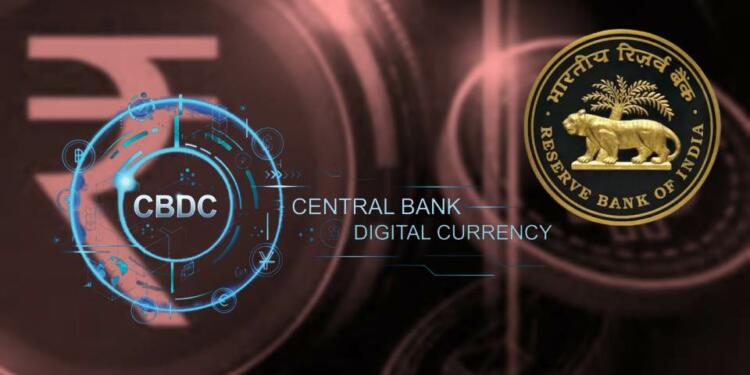The double whammy of shock from the COVID pandemic and the Russia-Ukraine war has badly jolted the global economy. Except for India, all the major economies have not been able to recuperate their economies. Without getting complacent, the Modi government has been carrying out systemic and deep-rooted structural reforms.
This has paved the foundation for a faster trajectory for the Indian economy. If the growth trajectory remains intact, India is well poised to dethrone current successors in the global economy. After the success of the Unified Payment Interface (UPI) and digital India, the Modi government has introduced a new landmark reform.
RBI starts the pilot test of the digital rupee
On November 1, RBI commenced the first pilot rollout of the digital rupee, or Central Bank Digital Currency (CBDC), in the wholesale segment. Currently, the pilot project is only limited and can be used to buy government securities (G-secs) from the secondary market.
In its official statement, the RBI informed that nine banks were involved in the pilot test. The nine banks included in the pilot project by the RBI are the State Bank of India, Bank of Baroda, Union Bank of India, HDFC Bank, ICICI Bank, Kotak Mahindra Bank, YES Bank, IDFC First Bank, and HSBC.
Also Read: BRICS currency will give the petro-dollar a taste of its own medicine
As per officials, the pilot project was a landmark success and it went smoothly without a hitch. As per the official data, around 48 transactions were completed with the help of CBDC, or digital rupee. The transactions carried out on the first day reached a whopping Rs 275 crore mark.
Reportedly, the first deal was done between the State Bank of India (SBI) and Bank of Baroda (BoB). India’s largest bank, SBI, sold government securities (G-sec) to state-owned BoB for the exchange of CBDC or digital rupees. Similarly, in another transaction, ICICI Bank sold the five-year G-sec to IDFC First Bank.
CBDC can eliminate the risk of settlement
With the CBDC, the settlement risk can be brought to a minimum or even completely eradicated. Let’s understand why it is so. Till now, the Clearing Corporation of India (CCIL) has been acting as the clearing house. In regular bond market trades, the settlement process is done as per the (T+1) rule. That is, the settlement of securities must be completed a day after the transaction was made.
Also Read: Here are the pros of using India’s official digital currency
But by trading in digital currency, the role of settlement authority doesn’t arise. Trade through digital currency will be done as per (T+0) rule, that is, real-time settlement, completely mitigating the risk of settlement. Additionally, banks trading in digital rupees will have to open primary CBDC accounts with the RBI.
How Digital Currency Works
Every participating bank in the pilot test has a digital currency account known as a Central Bank Digital Currency (CBDC) account. The banks have to maintain their accounts with the RBI. First, the banks will transfer money from their accounts to their CBDC account.
In the event of a transaction, the money will be debited from the CBDC account of the bank that bought the bond. Following a real-time settlement process, the money will be credited to the CBDC account of the bank selling the bonds. Furthermore, the settlement of securities has to be done on the same day.
Also Read: Why the world should move away from petrodollars and go back to the gold standard
Notably, there are many differences between digital currency and digital assets, or cryptocurrency. The prominent difference being that digital currency is legal tender as it has the backing of India’s central bank, the RBI. Contrary to that, cryptocurrencies don’t have any legal backing, face grave fluctuations, and have many risks attached to them.
Currently, only the wholesale CBDC pilot has been undertaken by India’s central bank. The staggering numbers clearly highlight the success of the wholesale CBDC. It is highly likely that RBI may very soon start the pilot test of retail CBDC as well, which can be used by the general public. All these success stories are the major reasons why India has been the lone, shining example of growing economies in a dark period of global economic slump.
Support TFI:
Support us to strengthen the ‘Right’ ideology of cultural nationalism by purchasing the best quality garments from TFI-STORE.COM































